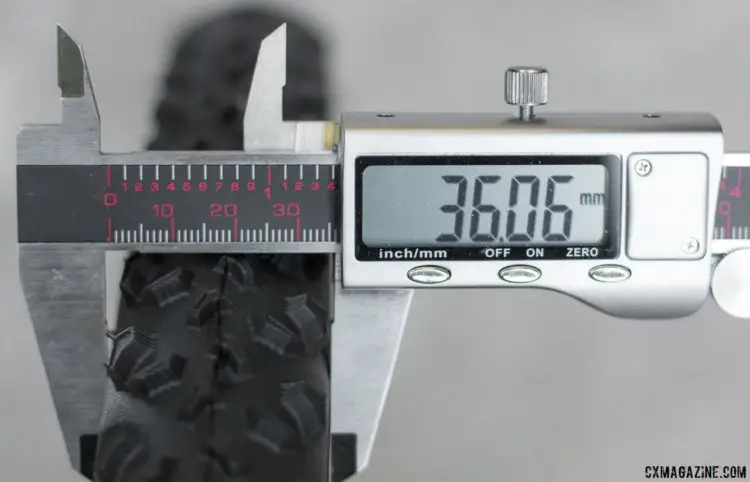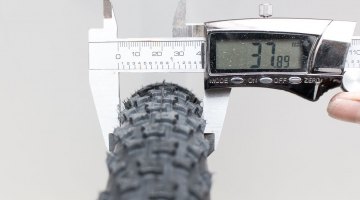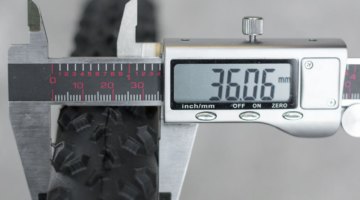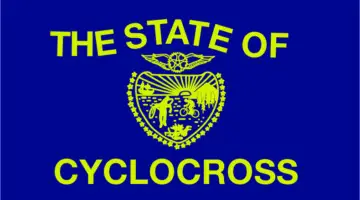There are rules that are on the books and rules that are enforced.
With American riders from across the country packing up for their trip to Reno to race for coveted National Championships, just like every other year, there’s a bit of uncertainty as to what to expect. What will the weather be? What tires and clothes will I need? And what rules will be enforced?
While racers can’t control their competition or Mother Nature, they can at least make sure they’re prepared for their race in terms of rules and regulation. But there’s often confusion as to whether precedent or by-the-book judgment wins out.
We have received several questions about the rules for non-UCI races at Reno Nationals, and we also had a few of our own. To get clarification for our readers, we reached out to Chuck Hodge, Vice President of Operations for USA Cycling.
Hodge provided the following responses to help clarify some issues and make sure that all riders racing in Reno have the best possible Nationals racing experience.
As a reminder, pre-registration for Reno Nationals, which is required for a ranked call-up, closes at 12:59 p.m. MST on Saturday, January 6. Visit usacycling.org for registration and more about the event rules.
Q and A with Chuck Hodge of USA Cycling
Cyclocross Magazine: There’s a 35mm maximum tire width for Masters/Collegiate/Singlespeed, but as far as we can remember, USA Cycling hasn’t measured competitors’ tires since Bend, OR or Verona, WI. Can you offer any assurance to racers that not measuring will also be the case this year? Clincher rims have gotten a lot wider in the last few years, reversing the previous trend of undersized tires and making normal 32/33mm tires bulge past 35mm at times. It’s confused racers and our readers.

Should you worry? On a 22.5mm internal width rim, the Terra fails a UCI and USA Cycling (Nationals) tire width maximums, and for most retail-paying customers, that’s a great thing unless the measuring blocks resurface in Reno. 36 mm at 30 psi. © Cyclocross Magazine
Chuck Hodge, USA Cycling: As with all regulations this one may be actively enforced and riders should be following it. The spirit of this special regulation is that we don’t fully enforce the UCI rules for our non-UCI categories, but have to “draw the line” at some point. As with all of our special regulations, we will look at this moving into next year.
However, this has been published since the beginning of the season and will be followed.
CXM: Last year, as you suggested may happen when we reached out prior to Hartford, USAC did not enforce the 80% rule strictly and left lapped racers on the field for most of the non-UCI races. Is this also the plan in Reno?
CH: I’ll clarify this a little bit. Our regulations allow for several ways of dealing with lapped riders, one of which is the 80% rule. So it is not that we didn’t strictly enforce 80%, but rather implemented the rule allowing riders to get lapped.
We will conduct the races this year as in the past, with the UCI category races being run under the 80% rule.
We will remind lapped racers to yield to leaders on the start line. [Racers: Hodge emphasized that not interfering with race leaders is key for this leniency to continue after last year’s controversy that came to a head at Jingle Cross. -Ed.]
CXM: A few Masters racers have managed to race Nationals and win on mountain bikes with flat bars and wide tires. How is it determined when racers are given a pass? Oldest categories only? Missed by officials? It’s obviously hard to turn someone away, but also hard for racers to know when rules are applied.
CH: The officials will be following the regulations and special regulations as published, and riders should be prepared to follow those regulations. Also, flat bars are allowed in some categories. See the special regulations for the event.
CXM: Are there any plans to separate the 19-22 Women and the Junior Women before Worlds implements that in 2020?
CH: We are definitely looking at that. As you know, currently we do award the top 17/18 Junior Woman a jersey in the combined race despite it not being an official UCI category. We also choose to race the Women’s U23 separately from the Elites. We will continue to look to be progressive in this aspect and have discussed this with the Cyclocross Committee.

Ashley Zoerner won the Junior Women’s 17-18 race at Hartford Nationals but didn’t quite get the attention of a race leader. We asked if the Junior Women will have their own race in the future. 2017 Cyclocross National Championships, Women U23/Junior Women 17-18. © Cyclocross Magazine
CXM: Masters Men and Women swapped days from last year, with the Men on Thursday and the Women on Friday this year. Racers have asked how that decision was made. We’re guessing some of the curiosity is because there are so many more Masters Men than Masters Women, but there’s a tradeoff between offering equal opportunity versus the best chance for more people to stay through Sunday as fans.
CH: We have also done this with Masters Road Nationals, basically “flip-flopping” from year to year in order to try and be as fair as possible.
I will say we are going to need to reevaluate the schedule for Louisville this December. We may have a Women’s Junior 17-18 race and we may need to work with our collegiate teams since students are under different pressures due to the December date. We will work with the community to make the most equitable decisions possible.
CXM: How are the registration numbers doing compared to this time next year?
CH: We are down from last year and tracking towards the numbers from a couple of years ago. We have been researching this a bit and have some theories on the numbers.
CXM: With 2018 having two Nationals, will call-ups next year be based on a 365-day ranking or by the calendar year?
CH: Our system and the UCI’s point structure uses a 365-day rolling ranking, so [365 days will] be included. What we use for call-ups and qualifications may change in the future, and we would publish those changes six months out so people could plan their season. No official changes are currently planned, but it is something we revisit.
Thanks to Chuck Hodge for his time to help clarify these questions for Nationals racers. For more from Reno, see our continuing coverage of the 2018 Reno Cyclocross Nationals on our dedicated Nationals page.





























